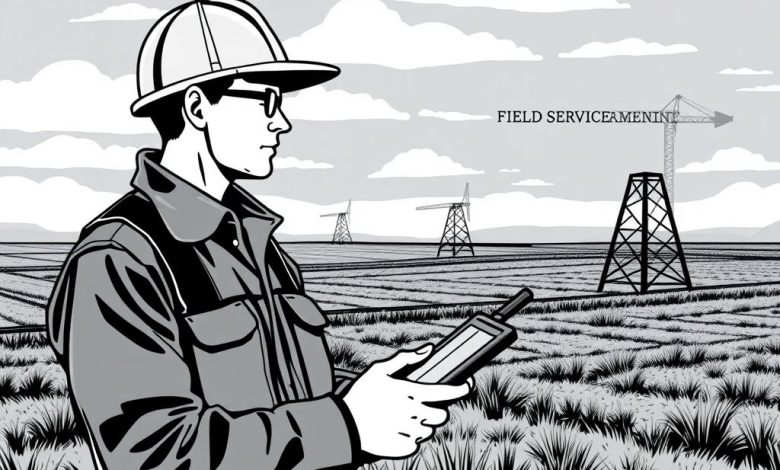Field Service Management with GPS Blackout Handling Navigating Challenges in Global Operations

Field Service Management with GPS Blackout Handling
Introduction
Field service management (FSM) is a critical component of modern business operations, particularly in industries such as telecommunications, utilities, and home maintenance. The integration of Global Positioning System (GPS) technology has revolutionized FSM by enabling real-time tracking of field technicians, optimizing routes, and improving overall efficiency. However, GPS blackouts can occur due to various factors such as physical obstructions, satellite signal interference, or intentional jamming. This article explores the challenges posed by GPS blackouts in field service management and discusses strategies for handling them effectively.
Understanding GPS Blackouts in Field Service Management
GPS blackouts refer to periods when GPS signals are unavailable or unreliable, causing disruptions in location-based services. These events can significantly impact field service operations, leading to:
- Reduced accuracy in technician positioning
- Disruption of route optimization algorithms
- Increased response times for emergency situations
- Potential safety hazards for field workers
Understanding the causes and effects of GPS blackouts is crucial for developing effective mitigation strategies.
Causes of GPS Blackouts
Several factors contribute to GPS blackouts in field service environments:
- Physical Obstructions: Tall buildings, dense forests, or mountainous terrain can block or weaken GPS signals.
- Signal Interference: Electromagnetic interference from other electronic devices or natural phenomena can disrupt GPS signals.
- Satellite Geometry: Poor satellite geometry can lead to reduced signal strength and accuracy.
- Intentional Jamming: In some cases, malicious actors may intentionally interfere with GPS signals.
Impact on Field Service Operations
GPS blackouts can have far-reaching consequences for field service operations:
- Route Optimization Challenges: Without accurate location data, traditional routing algorithms become ineffective.
- Delayed Response Times: Emergency situations may require manual intervention, increasing response times.
- Increased Fuel Consumption: Technicians may need to take longer routes or make unnecessary detours.
- Safety Concerns: Workers may face increased risks while navigating unfamiliar areas without precise location information.
Strategies for Handling GPS Blackouts
To mitigate the effects of GPS blackouts in field service management, several strategies can be employed:
- Alternative Navigation Systems: Implement backup navigation systems such as cellular network-based positioning or inertial measurement units.
- Redundant Tracking Methods: Utilize multiple tracking technologies simultaneously to ensure continuous monitoring of field technicians.
- Offline Mode Functionality: Develop mobile applications that can operate in offline mode, allowing technicians to continue work even during GPS outages.
- Predictive Maintenance: Implement predictive analytics to anticipate potential GPS blackouts based on historical data and environmental factors.
- Real-time Communication: Enhance communication protocols between dispatchers and field technicians to manage situations during GPS blackouts.
- Training and Procedures: Establish clear procedures for technicians to handle GPS blackouts, including alternative navigation methods and safety protocols.
- Regular Equipment Checks: Conduct regular inspections of GPS equipment to ensure optimal performance and minimize the risk of blackouts.
Case Study: Utility Company Overcomes GPS Blackouts
A large utility company faced significant challenges with GPS blackouts affecting their field service operations. By implementing a multi-layered approach to address this issue, they were able to improve their response times and overall efficiency:
- Integration of Cellular Network Positioning: The company deployed a system that uses cellular network signals to provide location data when GPS is unavailable.
- Implementation of Inertial Measurement Units: Mobile devices equipped with IMUs allowed technicians to maintain their position estimates even during brief GPS outages.
- Development of Offline Mode Features: The company’s mobile application was enhanced to function effectively in offline mode, ensuring uninterrupted work flow.
- Enhanced Communication Protocols: Dispatchers were trained to use alternative methods to guide technicians during GPS blackouts, reducing reliance on visual cues.
- Regular Equipment Maintenance: A strict schedule for checking and maintaining GPS equipment was implemented to minimize downtime.
As a result of these efforts, the utility company reported a 30% reduction in response times during GPS blackouts and a 25% improvement in overall operational efficiency.
Conclusion
Field service management with GPS blackout handling requires a proactive and multi-faceted approach. By understanding the causes of GPS blackouts, implementing robust mitigation strategies, and continuously monitoring and improving their systems, field service organizations can maintain high levels of efficiency even during challenging environmental conditions. As technology continues to evolve, it is crucial for FSM professionals to stay informed about new solutions and best practices for managing GPS-related challenges in their operations.



